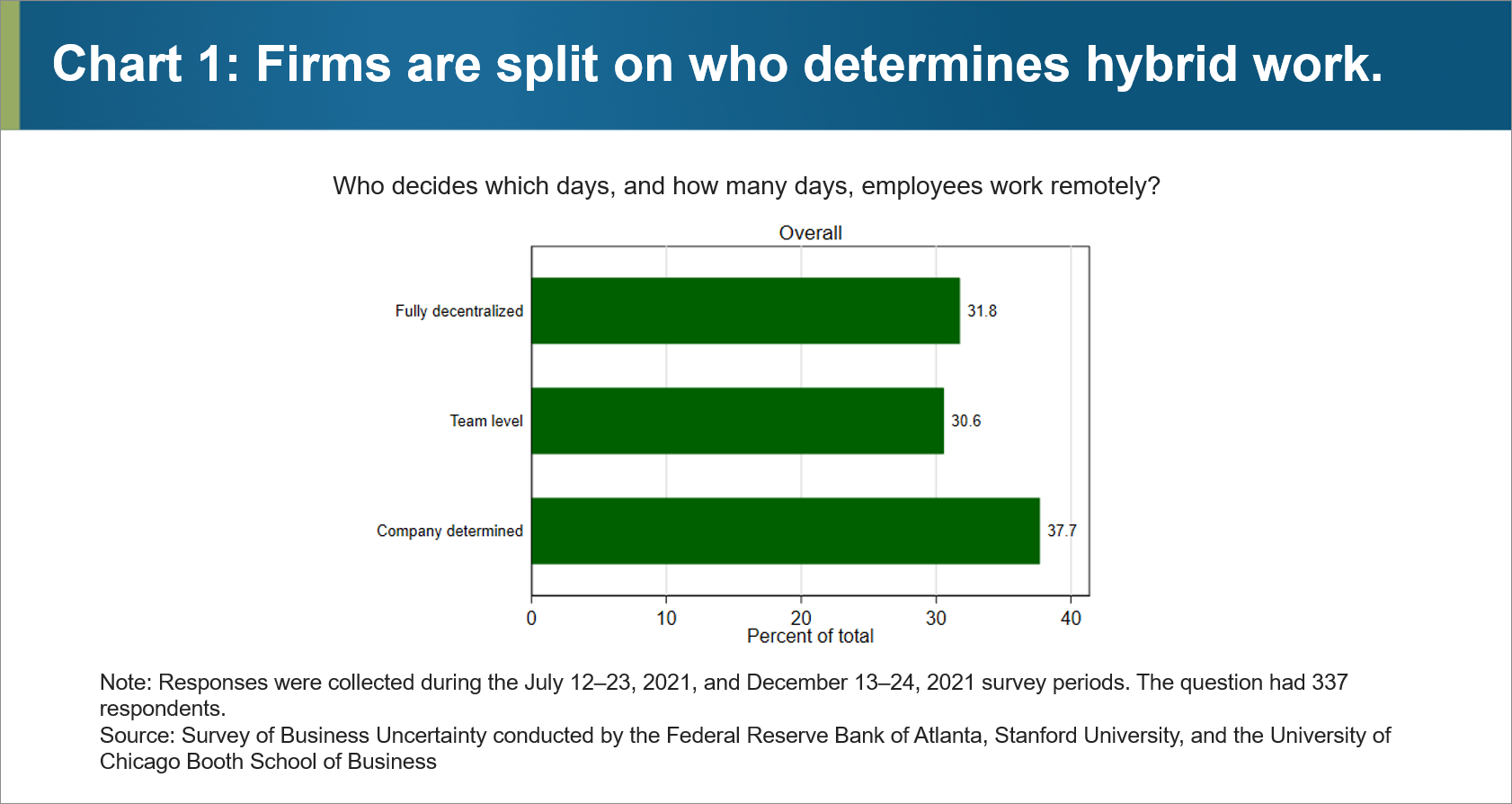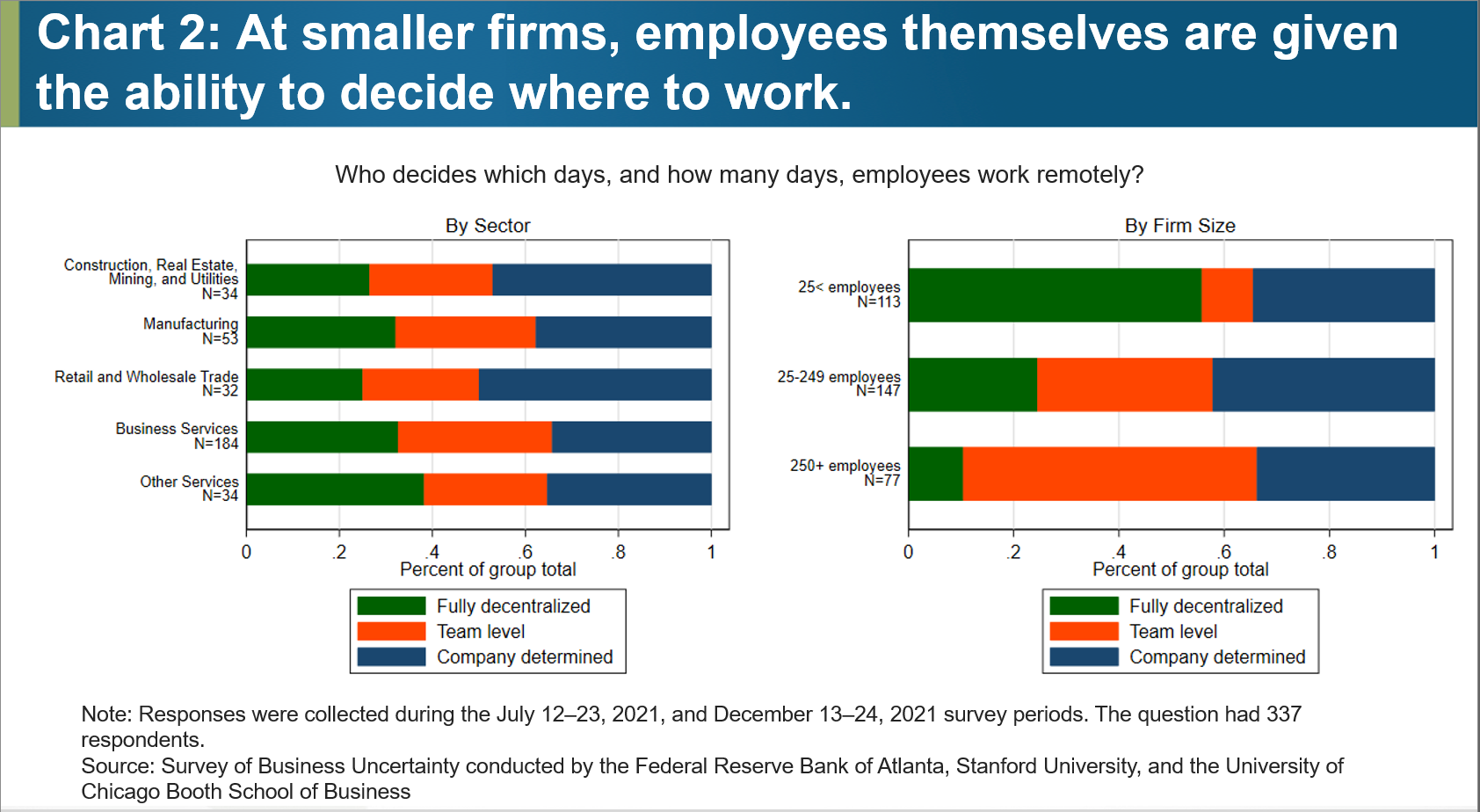Even after—or should we say "if"?—working from home eventually becomes less of a necessity, it's likely to stick around in a hybrid form, with some working days performed at home and some in the office. (This recent study , coauthored by three of this post's authors, also makes this case.) Still, much remains undetermined about how that hybrid arrangement will work and who at the firm decides how many and which days employers will require workers to be onsite.
To shed some light on how hybrid working arrangements are working, we posed a few special questions to executives in our Survey of Business Uncertainty (SBU) last July and again last month (December 2021). Specifically, we asked, "Does your firm currently have employees who work remotely?" If they said yes, we followed that up with the question, "Who decides which days and how many days employees work remotely?" Respondents selected options ranging from fully decentralized to company-determined schedules. (The results between the July and December surveys were nearly identical, so we've combined them here to simplify this discussion.) Among firms in our panel, 53 percent have employees who work remotely, and their survey responses are interesting (see chart 1).

As you can see, respondent firms are roughly split, with about 30 percent leaving the decisions up to their employees, 30 percent giving teams (or team leads) decision rights, and nearly 40 percent indicating the decision on how many and which days employees will be remote resides at the company (management) level.
To dig into these results a bit further, we looked at who makes these decisions over working arrangements by industry and firm size. Given the differences across the industrial sector's ability to work from home (see research by Jonathan Dingel and Brent Neiman
However, we see a stark difference when comparing these decision rights by firm size. More than half of the smallest firms in our panel (those with fewer than 25 employees) allow the employees to decide how and when to come into the office, compared to just 10 percent of larger firms (with 250 employees or more). Instead, these larger firms have left decisions about remote work with the team. Although that's certainly far from a rigid, top-down approach, it can suggest a need for coordination among teams, and this variation highlights remote work's big trade-off: balancing employee choice with the coordination that work life sometimes requires.
Allowing employees to choose their teleworking days has the benefit of flexibility, letting them to plan their work schedules around some nonwork commitments. But it has the cost of limiting face-to-face meetings, as on any given day of the week larger teams will likely find one or more members working remotely, which forces meetings partly or completely online. In our discussions with larger firms, they highlight the importance of face-to-face interactions and so have been promoting team- or company-level coordination. Interestingly, smaller firms appear to be walking another path: providing greater individual choice. Which one of these approaches becomes prevalent should become clear by the summer, when employees can (hopefully) return to the office. Though the future of office work appears to be a hybrid one, the form of decision making that will dominate that future has yet to be determined.










